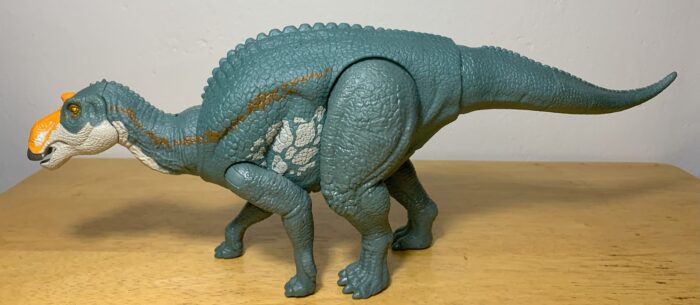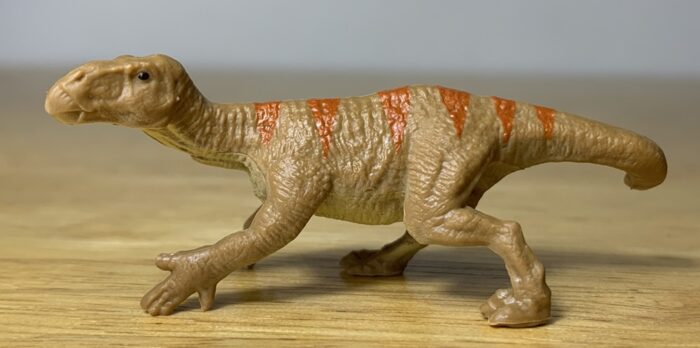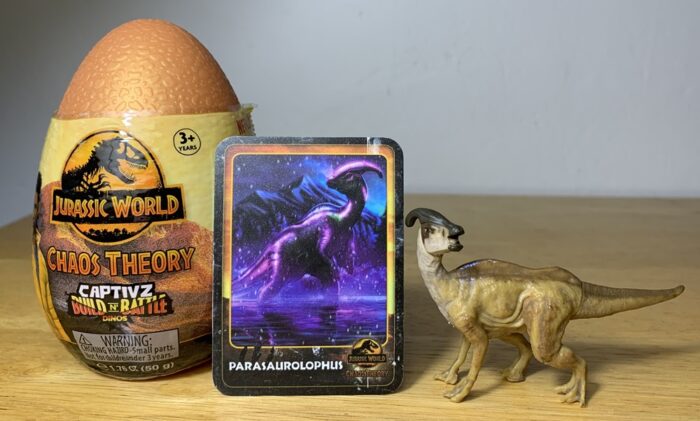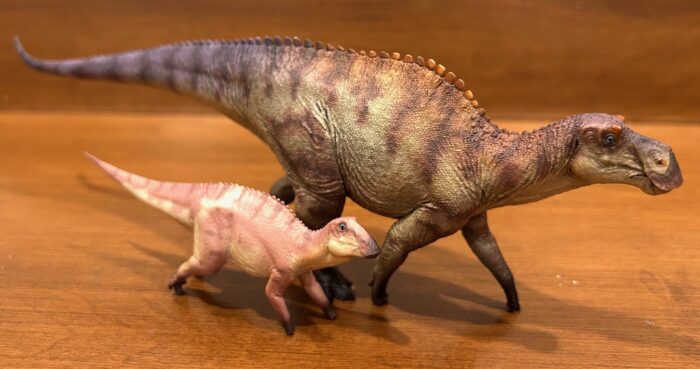Described in 1979 by Jack Horner (and Robert Makela), the “good mother lizard” and its communal nesting sites in Montana were discovered just in time to corroborate the notion that dinosaurs were active, warm blooded, bird-like animals, that invested time in rearing their offspring.
Classification: Ornithopod
Review: Hypsilophodon (Jurassic World: Danger Pack by Mattel)
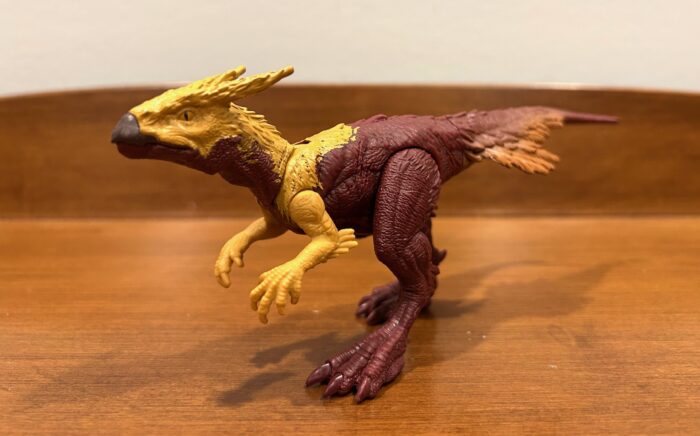
The very first illustration of Hypsilophodon that I ever laid eyes on depicted it as a very lizard-like animal perched high on a tree branch, an erroneous notion that arose back in 1912 and persisted until 1971 when it was finally debunked—although that didn’t stop children’s dinosaur books from continuing to portray Hypsilophodon as arboreal until well into the 1980s.
Review: Parasaurolophus (ANIA by Takara Tomy)

In my last Takara Tomy review, I covered the ANIA Styracosaurus, the 17th figure in the AL line and a decent, but admittedly somewhat drab-looking rendition of the horned dinosaur. As if in full awareness of the latter fact, Takara Tomy’s 18th figurine of the AL line features a striking contrast in the elegant and brightly colored Parasaurolophus, the first ornithopod dinosaur featured in the series.
Review: Iguanodon and Skorpiovenator (Jurassic World: Roarin’ Battle Pack by Mattel)
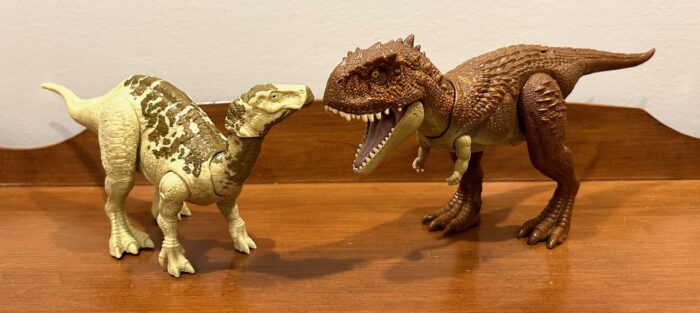
I initially wasn’t planning on acquiring either the Mattel Iguanodon or Skorpiovenator for my children’s dinosaur collection, but back in February 2024, Amazon Canada put the Roarin’ Battle Pack on sale for $26.94, which in this country is three dollars less than the retail price of a single toy in the Roarivores/Roar Strikers/Wild Roar size category.
Review: Iguanodon (Ultimate Dinosaurs by Yowie Group)
Review: Parasaurolophus (Jurassic World: Chaos Theory, Captivz Build N’ Battle Dinos by ToyMonster)
Review: Maiasaura (Haolonggood)
Review: Tlatolophus (Haolonggood)
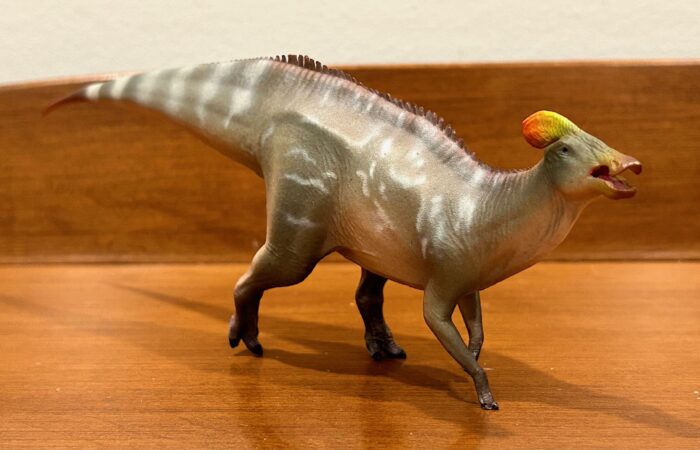
For a decade now, I’ve been reviewing toys of prehistoric fauna from across the entire globe, including Canada, the United States, Patagonia, Brazil, Argentina, Chile, the United Kingdom, Portugal, Spain, France, Belgium, Germany, Greece, Romania, Russia, Morocco, Niger, Egypt, Tanzania, Madagascar, India, Mongolia, China, Japan, Australia, and Antarctica.
Review: Parasaurolophus (‘Cartoon Series’ by Wing Crown / Gosnell)

Review and photos by Hubert, edited by DinoToyBlog
Having recently set the scene for Wing Crown’s Cartoon Series in our introductory review, let’s now take a brief look at another of the figures in the 7 inch dinosaurs set. Parasaurolophus is next on the list, now in some nice warm colors, reminiscent of a sunset sky.
Review: Lambeosaurus (Ultimate Dinosaurs by Yowie Group)
Review: Iguanodon (Margarinefiguren by Wagner)
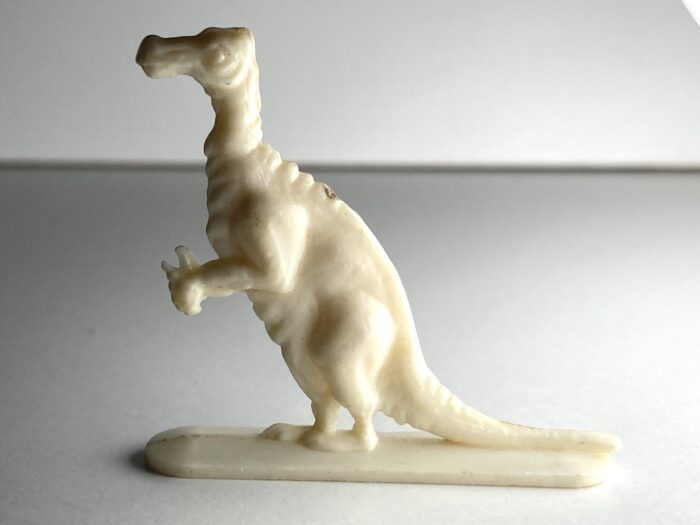
Sometimes in our clamour for the most spectacular, expensive, hot new dinosaur figures, we can forget there’s still plenty of joy to be found in plain, cheap, cool old dinosaur figures. And you can’t get cheaper than free! The German Margarinefiguren, or Margarine Figures, by Wagner, came free with packets of ‘butter’ (and maybe other products, I don’t know) in the 1950s.
Review: Edmontosaurus (Haolonggood)
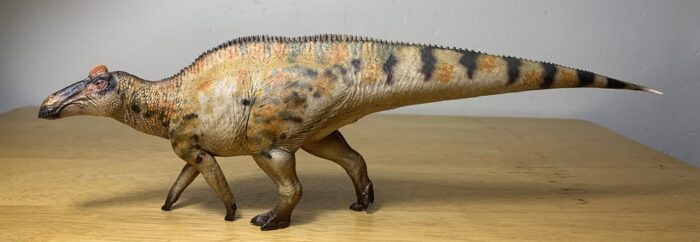
Edmontosaurus has been a staple in dinosaur toy lines since the very beginning of dinosaur toy production with Marx in the 1950’s. It’s a quintessential dinosaur, right up there with Triceratops, T. rex, and Stegosaurus, even if it was historically regarded as nothing more than theropod fodder.

